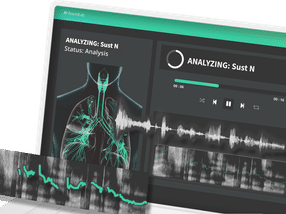Egg whites solve the 3-D problem
The real world is three-dimensional. That's true even in the laboratory, where scientists have to grow cells to study how they develop and what happens when their growth is abnormal.
More and more laboratories are seeking to develop three-dimensional cell culture systems that allow them to test their new techniques and drugs in a system that more closely mimics the way in which cells grow. However, a big sticking point is the cost of commercial media for growing such cultures.
Dr. Steffi Oesterreich, associate professor in the Lester and Sue Smith Breast Center at Baylor College of Medicine, and Dr. Benny A. Kaipparettu, a postdoctoral associate in her laboratory, found a solution – chicken egg whites. Their process has garnered attention in other laboratories around the world. A report on their technique appeared in a recent issue of the journal BioTechniques, which featured their article on its cover.
"It's important because the architecture of the cell is different in two dimensions compared to three," she said. "Understanding how the cell communicates, how protein work requires three dimensions."
For example, breast cells in the mammary gland form ducts through which milk flows when a woman breastfeeds.
"These are the same cells that cause cancer," said Oesterreich. "When you put these cells in the egg white preparation, it forms a structure like a duct. In the two-dimensional form, the cells cannot form a duct."
Only a three-dimensional culture allows cells to signal or send messages to one another as they would in a normal environment. Understanding cell signaling has become an increasingly important part of understanding how cells operate normally and what does wrong when they do not.
The use of a three-dimensional cell culture systems has become so important that the National Cancer Institute has launched a new Tumor Microenvironment Network focusing on studies of the cellular microenvironment – relying heavily on three-dimensional culture systems and encouraging initiatives to improve techniques.
Oesterreich and Kaipparettu in cooperation with others in their laboratory found that chicken eggs whites enabled them to grow both normal and tumors cells in three-dimensions.
"We have known for centuries that a baby chick can grow in three dimensions in an egg shell without any external support," said Kaipparettu. "Now we have found that Mother Nature has provided us a valuable tool for medical research. It gives an ‘eggcellent' tool for researchers around the world to perform three-dimensional cellular research."
They are seeking a patent on the process, and hoping to find corporate partners.
Egg whites are a good tool because they are easy and cheap to obtain and they are transparent, allowing the researchers to see the cells under a microscope.
"It seemed a good idea and we thought we would try it," said Kaipparettu.
Original publication: Benny Abraham Kaipparettu, Isere Kuiatse, Bonita Tak-Yee Chan, Meju Benny Kaipparettu, Adrian V. Lee, and Steffi Oesterreich, BioTechniques, Volume 45, Number 2: pp 165-171, August 2008
Most read news
Organizations
Other news from the department research and development

Get the analytics and lab tech industry in your inbox
By submitting this form you agree that LUMITOS AG will send you the newsletter(s) selected above by email. Your data will not be passed on to third parties. Your data will be stored and processed in accordance with our data protection regulations. LUMITOS may contact you by email for the purpose of advertising or market and opinion surveys. You can revoke your consent at any time without giving reasons to LUMITOS AG, Ernst-Augustin-Str. 2, 12489 Berlin, Germany or by e-mail at revoke@lumitos.com with effect for the future. In addition, each email contains a link to unsubscribe from the corresponding newsletter.





























































